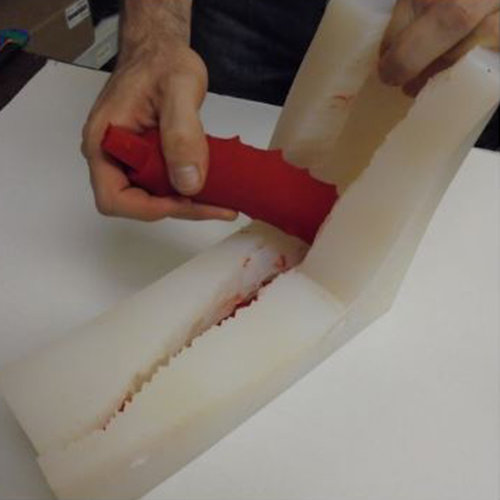This Spring, RapidMade teamed up with New York-based nonprofit Woodstock Farm Sanctuary for a special project to help a goat named Oreo deal with a unique medical condition.
As reported by the Shawangunk Journal, Woodstock Farm Sanctuary rescued Oreo from a petting zoo in 2015 where she had been neglected. After three happy years at Woodstock, Oreo was hospitalized in 2018 because of a buildup of abdominal fluid.
The issue flared up again this year, and veterinarians found that a tumor was preventing her stomach from functioning properly. When they recommend euthanasia for Oreo, however, Woodstock director Hervé Breuil refused to give up on her.
To help Oreo, Woodstock Farm Sanctuary recruited Dr. Isabelle Louge to develop a valve that would allow fluid to be released from Oreo’s abdomen. The only problem was that such a valve would need to be cast from rubber, which, using traditional technologies, would have been prohibitively expensive and time consuming to manufacture.
Cast Silicone with 3D Printing Tooling
RapidMade was able to help Oreo by deploying a combination of 3D printed tooling and rapid silicone casting. Instead of creating traditional tooling for the injection molding process, we used our Multi Jet Fusion 3D printer to quickly create a 3D printed master pattern. We then used this pattern to create a silicone mold that let us to cast a valve for Oreo in medical-grade silicone.
Not only did this allow us to deliver the valve in a fraction of the time and cost of injection molding, but it also made it possible for Woodstock Farm Sanctuary to create multiple iterations of the valve in a timely manner. Ultimately, we were able to create a product that met Oreo’s needs and was durable enough to stand up to the rough-and-tumble life of a goat.
Quickly Produce High-Quality Cast Rubber and Plastic Parts
Silicone and urethane casting are great options for small- to medium-volume productions that require the versatile materials and finish quality of injection molding. By combining these technologies with 3D printed master patterns, we can create high-quality plastic and rubber parts faster that would otherwise be possible and at less cost. This can benefit clients seeking to produce end-use parts or to create prototypes and first articles during their product development.
If you have a project that you think could benefit from 3D printing or cast silicone, reach out to us to learn more about our services or get started right away with a free quote and project analysis.




